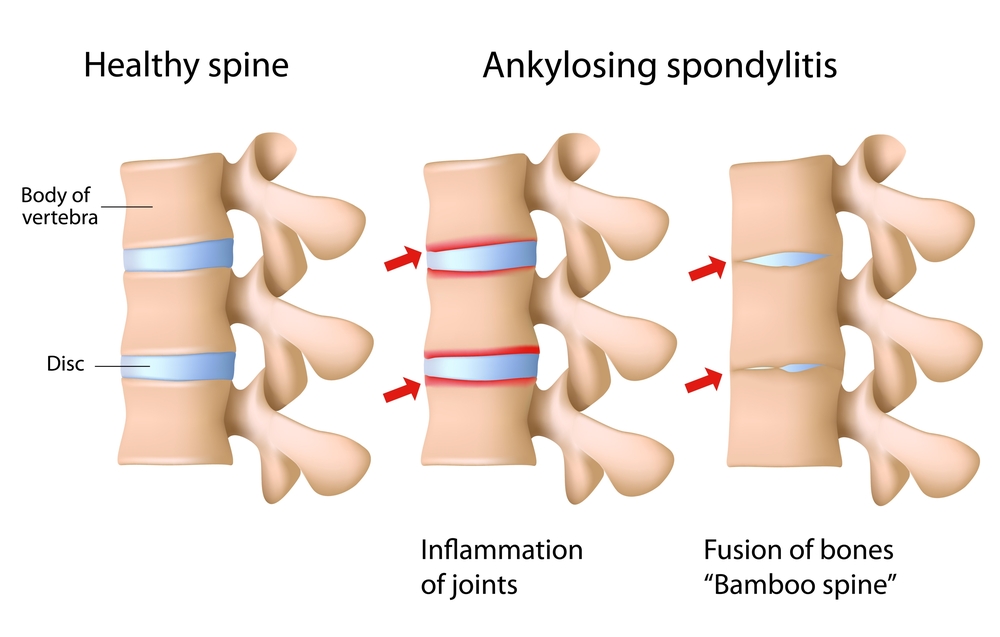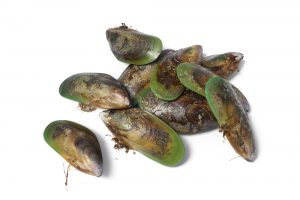Everything about Bechterew’s disease
In his last interview prior to his tragic death, Joost Zwagerman told HP / The time he suffered from Bechterew’s disease.
“You slowly grow crooked as it were. It’s no more than an annoying thing. Perhaps I will have to learn to write standing upright, “
according to the author.
Bechterew’s disease is a rheumatic disorder that usually occurs between the 15th and 35th year of life. This is a joint inflammation of the vertebral column, which was described for the first time by the Russian neurologist and psychiatrist Vladimir Bechterew in 1892. This condition occurs in 2 out of 1000 people. The thought that men in particular get this condition is now out of date. It appears that as many women as men have Bechterew’s disease. The Latin name of this disorder is spondylitis ankylopoetica (SA).
What is Bechterew’s disease exactly?
Bechterew’s disease is a form of inflammatory rheumatism. In Bechterew’s disease, the joints of the vertebrae and the SI-joints are usually getting inflamed first. These joints connect the spinal column with the pelvis. There may also be inflammation in other joints, such as those of the sternum, knees, hips and arms. As a result of this condition, the back can become to feel stiff and painful. Eventually, the inflammatory hearth affects the cartilage and the bones. The body responds by creating more bone tissue. As a consequence, the spinal vertebrae grow together and become deformed. The course of Bechterew’s disease is erratic. Periods with relatively few complaints are followed by periods of severe complaints. If treatment is started on time, the course of this condition may be greatly delayed.
How does Bechterew’s disease develop?
Little is known about this. However, it is clear that Bechterew’s disease is autoimmune disease. The function of the immune system is to attack harmful intruders, such as bacteria and viruses. In an autoimmune disease, the immune system fails and begins to see body-like cells as an enemy. It is suspected that hereditary factors may play a role in the development of Bechterew’s disease. After all, it occurs in multiple persons within one family. The hereditary factor HLA-B27 occurs in the blood of more than 90% of patients with Bechterew. However, that does not yet mean everything. Eight percent of the population who does not suffer from this condition also has this factor in the blood. Another theory is that an infection of the intestinal or urinary tract causes the body’s immune system to derail.
What are the symptoms of Bechterew’s disease?
Almost everybody with Bechterew’s disease suffers from stiffness and pain in the lower back and buttock region. These complaints are the worst at startup in the morning or after being in a fixed body position for a longer period of time. Body movement then reduces the complaints. At the end of the day, you can rest assured of lighting. Other joints may also be affected by Bechterew’s disease. There may be inflammation in, for example, the shoulders, hips, knees, ankles and sometimes the achilles tendon. Fatigue can occur as a result of a bad night’s sleep. The spinal vertebrae can eventually grow completely together. This results in stiffening of the total spinal column. This is called the “bamboo effect.” The bony bridges between the vertebral vertebrae look like a bamboo stem. Because the vertebrae are growing together, the bones are sanding alongside each other less, the pain is reduced. The shape of the vertebral column changes due to the growths. As a result, the patient starts to walk bending forwards more and more. One in three people with Bechterew sometimes has an inflammation of the iris in the eye. The eye is then red, painful and sensitive to light. Timely treatment is then necessary to prevent damage to the eye.
How is Bechterew disease diagnosed?
Making a diagnosis is a complicated task for a doctor. To date, no standard examination has been developed to establish Bechterew’s disease. In addition, the onset of low back pain and stiffness often occur in people who do not have this disease. There may also be another condition in the game. As a result, it may take years to diagnose Bechterew’s disease. For the GP and the rheumatologist, your personal story is an important source of information. In addition, he or she will want to know if there are more cases of Bechterew in the family, whether you suffer from psoriasis and whether you have had inflammation of the intestine or urinary tract before the symptoms occurred. Of course, extensive physical examination will also be carried out. The motility of your back will be checked. It will also be checked whether there are painful spots in the back or at the pelvis.
A blood test is performed only to exclude other conditions. The presence of the hereditary factor HLA-B27 in the blood is of no significance at all. Many people have this factor in the blood without developing Bechterew. And not everyone with this disorder has HLA-B27 in the blood. The doctor may also decide to take an X-ray of the SI joint in the lower back. This can usually only be damaged in an advanced stage of the disease. So in the early stages, such an X-ray produces little information.
How is Bechterew’s disease treated?
Bechterew’s disease is not curable. With a fast and proper treatment, the serious effects of this condition can be prevented and pain and stiffness reduced. In most cases, you are treated by a rheumatologist. He will initially give you the urgent advice to stay moving, like walking, cycling and swimming. You can also visit special training groups that focus on Bechterew symptoms. In addition, a physiotherapist or occupational therapist may be involved in the treatment.
The other pillar of the treatment is medication. Depending on the severity of the symptom, this may range from a simple analgesic like paracetamol to an anti-inflammatory analgesic like an NSAID. When using this drug, side effects may occur. When you are looking up to this, try to fight the inflammation and pain with liquid Green-lipped mussel with Bio-Curcumin. Orthopedic surgeon Jan Ide de Jong says:
“Bechterew can be categorized as a chronic inflammatory disease. Therefore, anti-inflammatory supplements like the Green-lipped mussel – Curcumin could possibly dampen the pain and inflammation. There have been two positive reports from Bechterew patients to date about the use of liquid Green-lipped mussel and Bio-Curcumin.”
When does Bechterew’s disease require surgery?
Very often, the doctor may decide to perform surgery for example to replace an affected joint. If the spinal column is fully grown together, body posture can be improved by means of a surgical procedure. Such an operation – called columnotomy – can be very invasive. The doctor will therefore in advance discuss all the advantages and disadvantages with you in detail.

Share this page
Tweet

Download for free the booklet ‘Moving without pain’ with a retail value of $6.75 / £4.95.
Any questions? Please feel free to contact us. Contact us.








